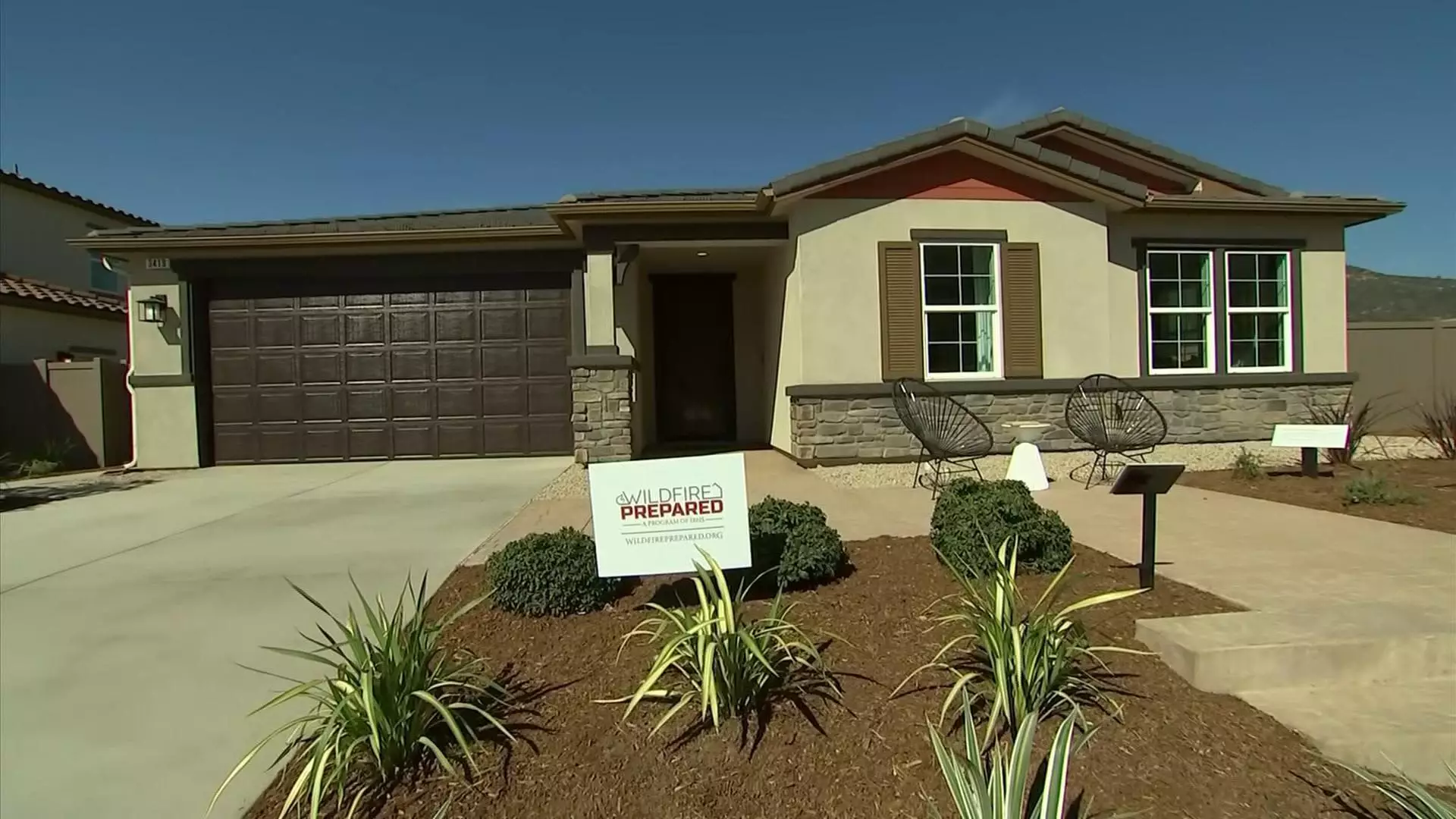In a state ravaged by climate-induced wildfires, California is at a crossroads—a critical juncture that demands innovative thinking and bold action. The unveiling of KB Home’s first “wildfire-resilient” community in Escondido stands as a beacon of hope against a backdrop of destruction. With the destruction of thousands of homes just months prior, the timing couldn’t be more crucial. Here, 64 homes are not just structures; they represent a shift in how we conceptualize safety in the face of natural disasters. But the enthusiasm surrounding this initiative should be tempered by skepticism; while innovation is commendable, one wonders if it’s merely a Band-Aid on a much deeper societal wound.
Architectural Adaptation: A Quick Fix or a Sustainable Solution?
KB Home’s rapid architectural pivot to integrate wildfire resilience features raises questions about the priorities of the housing market. Covered gutters, non-combustible siding, tempered-glass windows, and other features are impressive—yet one cannot help but ask if they signify a genuine commitment to sustainable housing or simply a reactionary measure to consumer demand and insurance pressures. Steve Ruffner, the company’s regional general manager, noted that their decision came after witnessing an IBHS fire-resistant home demonstration. Was this urgency born from a genuine concern for community well-being or dictated by economic fear?
Despite its potential as a prototype, this development represents just one model of housing, and its price range—starting at $1 million—renders it inaccessible for many Californians, especially those most vulnerable to fire hazards. Can we truly call this an inclusive response to climate change when it caters primarily to affluent buyers? It’s easy to celebrate innovation, but if that innovation fails to serve the needs of the lower and middle classes, we may inadvertently perpetuate a growing inequality in housing security.
The Quest for Resilience: A Balancing Act
As climate change accelerates, the need for fire-resistant communities increases. During the recent Palisades Fire, homes built under these new fire-resilient standards emerged unharmed, showcasing the potential of such construction methods. Yet, the challenge lies in making these homes a standard rather than an exception. Roy Wright, CEO of IBHS, rightly identifies KB Home’s endeavor as a “test bed.” However, the key question remains: will other builders take the leap?
The insurance landscape complicates matters further. With companies withdrawing from California en masse, most homeowners find themselves paying upper-crust premiums or left without coverage entirely. This self-fulfilling prophecy—where homeowners spend more to ensure their gradually diminishing access to coverage—reveals a systemic problem in how communities respond to climate threats. While fire-resilient homes are an important step in the right direction, they must be accompanied by broader policy changes to ensure that insurance is both accessible and affordable.
Defensive Space or Deceptive Space?
Wildfire resilience efforts include structural measures and strategic landscaping, incorporating defensible spaces with low-combustible vegetation. Yet this raises its own questions: Are homeowners ready to embrace this new type of landscaping when aesthetic preferences may conflict with safety? The reality is that many people have romantic notions of perfectly manicured yards, often filled with highly flammable ornamental plants that could lead to tragic outcomes. Educational efforts are essential to shift these attitudes and align them with the new realities of fire risk.
One has to wonder if community engagement will keep pace with these rapid developments. The U.S. has plenty of examples where the enthusiasm for innovative construction falters because of a lack of public buy-in. Homeowners and municipalities must be willing to adapt, but will they? As Wright aptly notes, “Nothing is ever fireproof.” It’s an acknowledgment of the multifaceted risk that must be addressed beyond simply erecting new structures.
Hope or Hype? The Future of Wildfire-Resilient Housing
As KB Home takes this significant step into the future of housing, there is a tension between cautious optimism and rational skepticism. Homes that prioritize safety while remaining accessible to everyday families will determine whether this project serves as a model—or merely flounders in the sea of well-intentioned but ineffective responses to climate change. The lack of affordable options could hinder widespread implementation of fire-resilient homes, pushing safety further from the reach of those who need it most.
In a world increasingly grappling with climate crisis repercussions, we must demand not only innovation but inclusivity in our safety solutions. If KB Home and like-minded builders want to lay the foundation for a true resilience revolution, they must ensure that their achievements aren’t just a showcase for the upper class but a real safety net for all communities threatened by wildfire disasters. Only then can we begin to feel genuinely secure among the flames.

